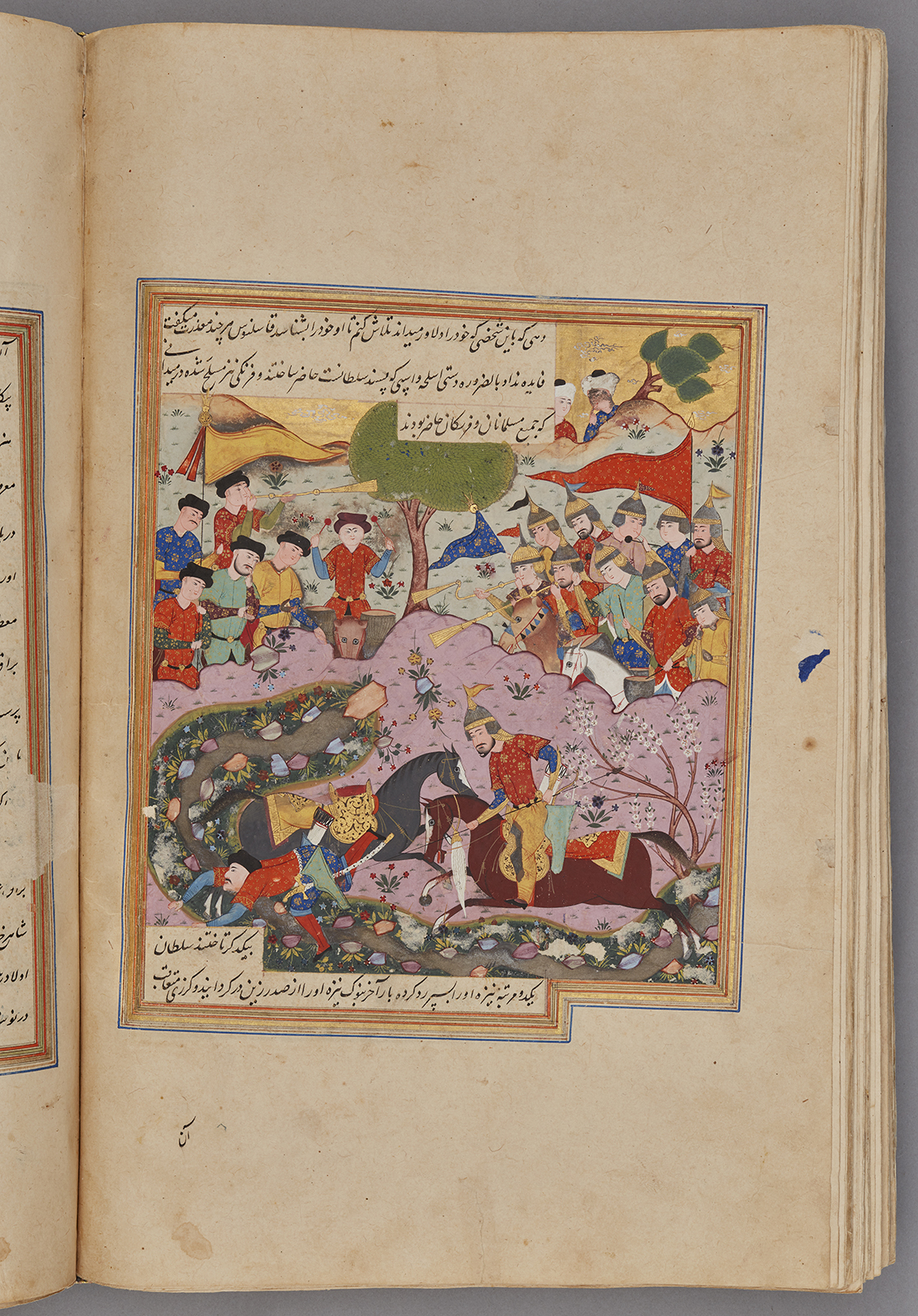Click on the image to zoom
A duel between Kaykavus and a Farangi person, Folio from a manuscript of Nigaristan
- Accession Number:AKM272.f164v
- Creator:Author: Ahmad b. Muhammad Ghaffari, Persian, died 1567 Scribe: Ahmad al-Shirazi
- Place:Iran, Shiraz (probably)
- Dimensions:38.7 cm × 25 cm × 6.4 cm
- Date:1573-74 CE/980 AH/AH 980
- Materials and Technique:Ink, opaque watercolour, and gold on paper
The miniature painting "A duel between Kaykavus and a Farangi person" is from an intact manuscript of Kitab-i Nigaristan, a collection of anecdotes and historical incidents written in prose by the historian and scholar Ahmad Muhammad Ghaffari (1504–1567/68) of Kashan in 1551–2. This illustrated manuscript, dated 1573, was probably produced in a Shiraz workshop.
See AKM272 for more information about the manuscript and links to the other illustrations.
Further Reading
The image is divided into three parts. A duel takes place in the lower part of the image. The middle is marked by the troops arranged on both sides. The high line of the horizon marks the sky, whose golden colour is visible behind the textbox. The opposing troops are identified by their respective headgear; members of the left unit wear a type of hat while those on the right wear helmets. This difference is one visual clue that the conflict is between Muslims and non-Muslims.
The text indicates that the duel is between Kaykavus, the Seljuk King and a foreigner (farangi is a Persian term for non-Iranian westerners). Kaykavus, the son of the Seljuk Sultan, has fled to Constantinople after his claims to power were thwarted by his brothers following their father’s death. Kaykavus is now measuring himself against a foreigner. This fight is won by Kaykavus, who takes the high-spirited foreigner off his horse with a lance.
The illustration depicts the moment in the story when Kaykavus pierces his opponent with the lance so that he falls from the horse. The armies at both sides of the image carry the flag of their troops and play musical instruments as a gesture of applause.
The fighting scene takes place on a purple steppe background interspersed with some tufts of flowers. The silver-coloured river, now oxidized to black, is lined with green grass, stones, and flowers.
The setting of this miniature painting reflects a typical Persian battle scene, adapted from the Timurid tradition (1370–1507). According to this tradition, troops face each other and are set on the left and right sides of the image, marked by their flags. The main battle takes place at the middle of the image.
- Elika Palenzona-Djalili
References
Habibi, Negar. ʻAli Qoli Jebādār et l'occidentalisme safavide : une étude sur les peintures dites farangi sāzi, leurs milieux et commanditaires sous Shāh Soleimān (1666-94). Leiden & Boston: Brill, 2018.
Note: This online resource is reviewed and updated on an ongoing basis. We are committed to improving this information and will revise and update knowledge about this object as it becomes available.


